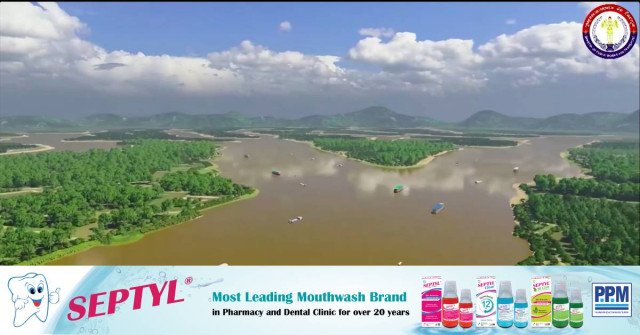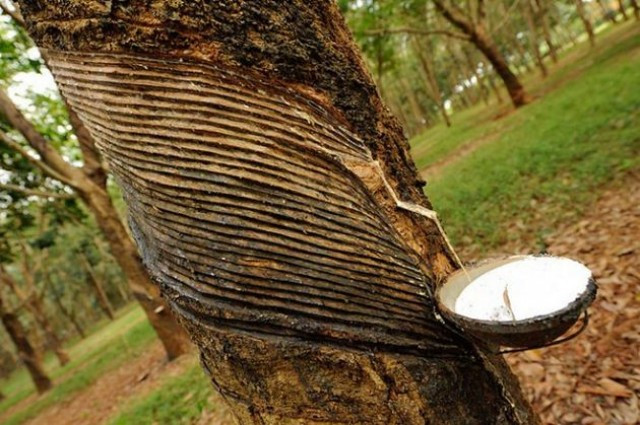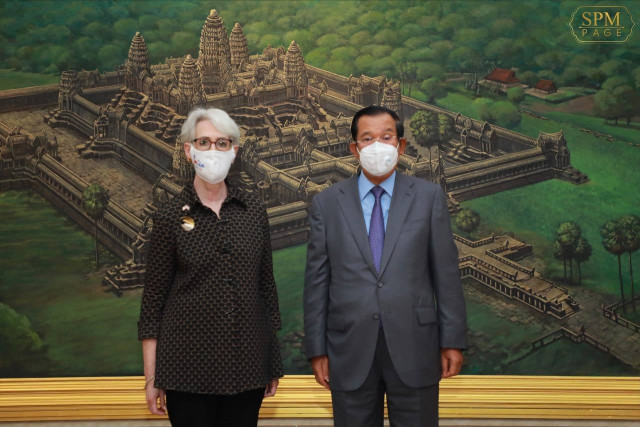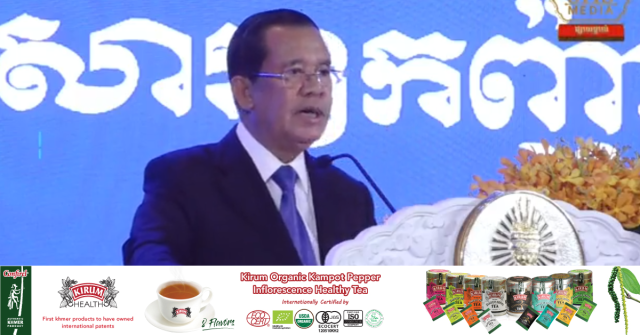Techo Funan Canal Wins Backing Despite Alarm

- By Lay Sopheavotey
- and Teng Yalirozy
- April 18, 2024 3:30 PM
PHNOM PENH – Transport investors, unions and politicians have backed the 180km Funan Techo Canal project despite environmental fears and claims that it will give the Chinese navy access to the Vietnamese border
Supporters of the canal cite the benefits for investment and the transport sector.
However, they warn of falling into a Chinese trap following some reports that the canal could be used to help the Chinese military.
The project was agreed in October and will take four years to complete. The $1.7 billion cost will be covered by the State-Company China Bridge and Road Corporation (CRBC) under a build-operate-transfer scheme.
It is the first logistics project that connects the Mekong River to the sea, aiming to expand the country’s shipping capacities.
Ath Thorn, president of the Cambodian Labour Confederation (CLC), said linking the water systems was good and could become an important water source for local farmers.
It would help transport goods but he asked the government to not evict people at the development site without appropriate compensation.
“I support this project and want to see the canal soon,” he said.
Cambodia Logistics Association president Sin Chanthy said the canal would be of great value. It would cut transport costs and congestion, not cause road damage, and help create greenery along the canal.
“As someone working in logistics, the water transport potential and the canal could offer hope for locals to enjoy the beautiful green landscape,” he said. “I want to see it very soon.”
Kong Monika, a senator and the president of the Khmer Will Party, asked the government to present a detailed plan so that the public and the stakeholders are aware of the benefits and impact such as on the environment and the local people.
“I hope that this project will contribute to national development,” he said. “But the government must be careful with the budget spent and avoid falling into China's debt trap.”
The canal will connect three existing canals – the Takeo Canal of the Mekong River, the Ta Ek Canal of the Bassac River and the Ta Hing Canal in Koh Thom district – before reaching the sea in Kep province. The canal will pass through Kandal, Takeo, Kampot and Kep provinces.
It will be 5.4 meters deep (4.7 meters for docking depth and 0.7 meters for a safety gap) and have two lanes for entrance and exit. There will be water gates in Kandal, Takeo and Kep provinces, as well as 11 bridges and a 208km road on both sides of the waterway.
The waterway will reduce the distances for transportation by more than 69km from the Phnom Penh Autonomous Port to the Sihanoukville Autonomous Port through Vietnam’s Cai Mep Port, and 135km from the Phnom Penh Autonomous Port to the Kampot International Port.
Last week, Senate President Hun Sen denied allegations that the canal will be a gateway to facilitate the access of the Chinese navy to the Vietnamese border. This claim was made in a Vietnamese report, cited by the Singaporean media outlet The Straits Times.
Prime Minister Hun Manet tried to ease the Vietnamese Prime Minister’s worries about the environmental impact, asserting that the canal would not cause water disruption and environmental hazards to Vietnam.
However, Stimson Center Southeast Asia's Brian Eyler told Nikkei Asia that Mekong River Commission maps indicate the canal's direct impact on the Mekong mainstream would be far greater than Cambodia's claims.















